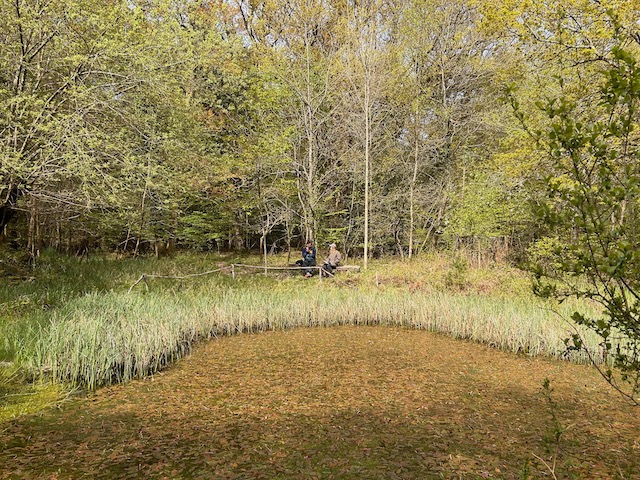All designers work to make things better. Regenerative design is a particular type of design because of its declared goals. This isn’t any kind of better. This is a specific kind of better, in which human and living systems can survive, thrive and co-evolve.
So while regenerative designers do lots of the things that regular designers do, (like developing a design brief, having ideas and testing these against the brief), there are two more things that make regenerative designers different. They must
- Hold a vision – hold and continually renew a vision for a regenerative future
- Create transition – Continuously be working to create a transition to that future.
Holding the vision
We know from the Three Horizons model, that it is hard to imagine a viable, thriving world because our existing way of living, whilst on the point of collapse, is so dominant, so all-encompassing.
As Rob Hopkins says in From What Is to What If, the climate crisis is actually a crisis of the imagination.
So we need to do the work. And this is hard work, but we need to keep asking the questions? What could this all look like if we felt our interdependence.?What if we could create abundance? What if we could unlock what is emergent?
This is work that we need to do ourselves, to train ourselves to do. But this is ultimately work that we need to do with others. As regenerative designers we need to nurture this vision, help others create a shared vision, and keep bringing these ideas to the table.
Creating the transition
The goal of regenerative design trumps the needs of any individual client. It is a collective goal, collective for people and living systems.
As we have seen from the Library of Systems Change, there are systemic barriers to reaching this goal. But in any design project we have the potential to create systems change. To, in the words of Bill Sharpe, ‘harness the future potential of the present’.
This is about creating the transition towards that vision of the future we hold. The Library of Systems Change shows us that there are three courses of action:
- To look for small examples of that viable future in the present, and to nurture these, to help them grow and propagate.
- To create a transition to that viable future. These are the enabling moves
- To actively dismantle the systems of the present that are contributing to the destruction of the human and living world.
Acting on behalf of the system.
In structural engineering where work is done to a party wall between two buildings, in certain circumstances it is necessary to appoint an engineer to work on behalf of the wall. The wall is their client. (I find it very pleasing that the advisory body for engineers representing walls is called the Pyramus and Thisbe Society, named for the lovers in a Midsummer’s Night Dream who must speak through a gap in a wall that is in turn played by another actor).
The regenerative designer is working on behalf of the human and living systems. On their behalf we must nurture and co-create a vision for a viable future, and create that transition through the work that we do.

